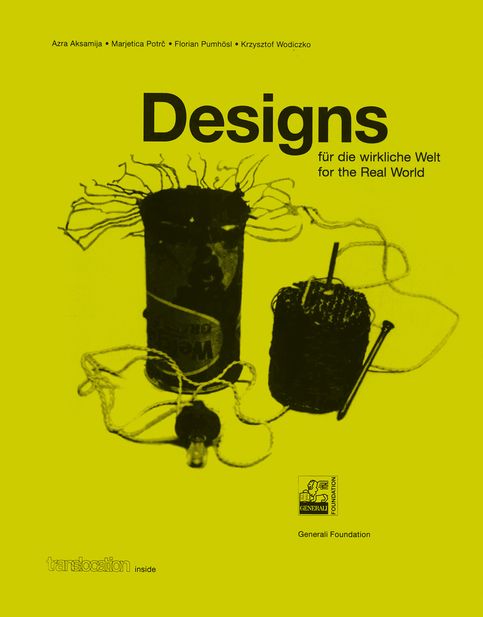
Designs
for the Real World
Publication to the exhibition from September to December 2002.
Ed. by Sabine Breitwieser. Preface by Dietrich Karner. Introduction by Sabine Breitwieser. Texts by Azra Aksamija, Marjetica Potrč, Florian Pumhösl and Krzysztof Wodiczko.
This publication presents selected projects by four artists and architects who explore the design of our living environment and stand out for their interdisciplinary approach. Each in their own way, the various projects will address utopian or ecological design, design for the Third World, "social engineering," urban development, urban areas of conflict, and the question of the responsibility of art in a "new genre public art."
Azra Aksamija (born 1976 in Bosnia) used the example of the "Arizona Market, the largest black market In the Balkans, to analyze and visualize urban phenomena. This market had grown up along the north-south transport route In Northern Bosnia—named “Arizona Road" by the American SFOR soldiers—and clearly illustrated the new political, social, economic and urban situations that have arisen as a consequence of the war.
Marjetica Potrc (born 1953 in Slovenia), who has trained both as an architect and an artist, explores the continuous process of urban change, and the dialogue between planned districts and those that have evolved randomly: for example, between “gated communities" and the constantly expanding slums. Like an "urban anthropologist”, she examines various Initiatives from different geographical and social areas that overcome high-tech problems using low-tech solutions.
Florian Pumhösl (born 1971 in Austria), reconstructed designs by Victor Papanek, among others. In the 1960s, Papanek wrote a pioneering work on issues related to the design of our living environment under ecological and ethical aspects: "Design for the Real World.” The “re-reading" of this classic makes it possible to see to what extent these concepts have already reached the market in mass-produced form, while the model-like reconstructions reveal themselves as a medium for conveying the ideas and ideology of this type of design concept.
Krzysztof Wodiczko (born 1943 in Poland) has trained and worked as an industrial designer. Since the 1970s, he has been developing so-called "Vehicles" which combine functions such as mobility and communication or mobility and shelter. In the "Xenology" series (since 1992), he has evolved apparatuses that are designed for use by migrants to aid them In communications and raising their presence. Wodiczko is also well-known for his large-scale projections on public buildings, which are thus used to temporarily convey specific political content on a temporary basis.